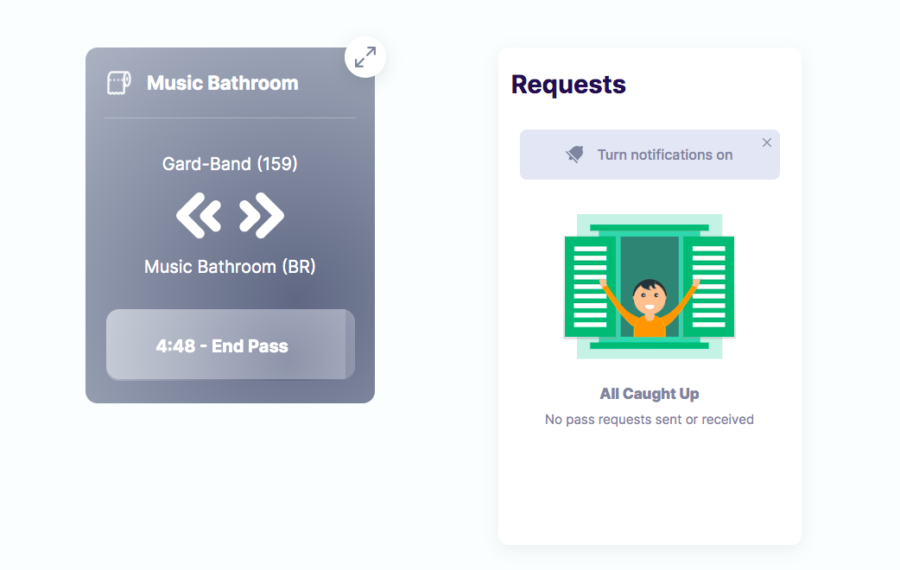SmartPass Implemented For Classroom Consistency
September 28, 2021
The new school year has brought new policies with it, the biggest one being SmartPass. The online hall pass site is used for passes during classes, as well as for the freshman ISHP requirement (two ISHPs per week).
The main reason for implementation is to keep track of the ISHP sign-ups because previously used tools–FlexiSched and Canvas Calendar–were clunky and unsuccessful. The goal with SmartPass was to create more student independence when it came to leaving the classroom, which Mrs. Henningsen liked because “Students could create their passes and students could end their pass. They have it more in their hands.”
This was not reiterated to students, and the high school community, which led to rumors about SmartPass’ implementation travel throughout the building.
Rumors have included less disruption in class and preventing vandalism in school bathrooms. Mrs. Henningsen proved the first rumor correct, as “if you know you have to run to the bathroom quickly, get a drink from the bubbler or fill your water bottle, just get to your next class and do it right away. You don’t have to fill out a pass if you just get in, drop your stuff off, and leave before the start of the bell. That’s the incentive of doing it at that moment–you don’t have to take out your Chromebook, you don’t have to sign in.”
She added, “It cuts back on students being like ‘I’m bored, I want to take a walk to the bathroom or get a drink.’ It’s kind of like, is it worth it? You’re going to have to grab out your Chromebook and create the pass, that sort of thing. Ultimately, just trying to reinforce the idea that the best time to take care of that business is right before the start bell. That’s to cut down on the lost instructional time.”
When asked about the vandalism aspect, Mrs. Henningsen said, “It definitely wasn’t a primary reason–it was really about a user-friendly tool that can help with the ISHP requirement and just age-appropriate to let students be in control of managing their time out of class. This can aid in those instances but we’re not sitting and watching for it. We’re too busy to do that. Just like the many cameras around the building, if something were to come up, we have a tool where we can find out more information if needed.”
Mrs. Henningsen knows “from having taught in this building and then been an administrator in this building that the past consistency from classroom to classroom wasn’t really existing. Like in some classes your teacher would allow one person to go at a time, and in some classes, you’re not even walking out with a physical pass in your hand. It [SmartPass] helps bring some consistency around the process of a student leaving the classroom.”
The consistency of students when leaving classes is continued by the five-minute time limit on the pass. Mrs. Henningsen said she “picked five minutes as a starting point. What we’ve been operating with in previous years is the understanding that it was four minutes out of the room. So, I actually went a minute beyond that, but it’s [the five-minute passes] not something we’re dishing out minors about. In my mind, it was a minute beyond what we had been operating with previously.”
While this is true in the eyes of the administration, students have a different view of things. For junior Gabby Pineres, “SmartPass makes things more difficult in the classroom and negatively affects my learning. Personally, it takes me a while to set it up so that takes my focus off the class, and onto the pass. There is also the issue of it being embarrassing, especially when writing a pass to the bathroom. If you take more than the time allotted, then your pass turns red. We all have individual circumstances that might cause us to take longer than the time given. I don’t think we should be subjected to embarrassment for that.”
Several students share Pineres’ view, and their opinions will be shared in an article about school policies soon.

